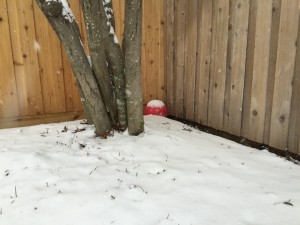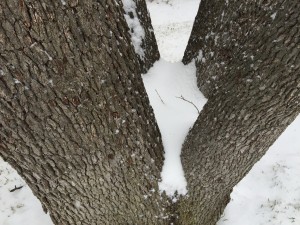A Revisionary Valentine Story
© James J. Doyle, Jr. 2015
“Harold, where you going with that titanium zonk ray?”
“I am going, Maud, to flash some sense into those asteroid miners. Toss me the keys to the flyer.”
“Have you lost all your earth sense, Harold? It’s the revenue from that asteroid mine that finances our colony, your job and our home.”
“Look there, Maud, out your kitchen bubble. Do you see our nitro bean home fuel garden? Do you see what’s left of our labors?”
“Oh, Harold, they’re gone. All those cute little beans.”
“Flattened to paste. A loose piece of ore smashed those little fellows to smithereens. Enough is enough. First our pet snooze squealer. I know it wasn’t really alive, but I did build it from leftovers. Then that hole in the chicken-on-a-stick coop. It wasn’t a small hole either, and there weren’t many chickens left still on their sticks. That was not a pretty sight. Now this. Enough is enough. I’m flying over to that rock plant and having it out with them, me and Billy Bob.”
“William, Harold. Your friend’s given name is William, not Billy Bob. He does have a doctorate in solids manipulation.”
“He’ll manipulate those rock handles. They’ve got to pay, Maud. It’s not fair. We didn’t come this far into outer space to be knocked around by some cowboys tossing asteroids. It’s not fair.”
“It isn’t Harold, and they’ll pay. They did for the squealer and the coop. Poor chickens. I’m sure they’ll atom flash a credit slip for the beans. They always do. I’ll call.”
“But why and what for, Maud? I don’t care about the money. I’m just tired of all the falling rocks. Why?”
“Harold, didn’t you read the Intergalactic Geographic article I put by your float chair, next to the Dr. Pepper you’d just laser popped open.”
“I read the pictures between sips. Billy Bob — ok, ok, I mean William. He says one blink speak picture is worth a thousand respirator wheeze words. Figured that out, he did. That’s why he stopped with only one advanced degree, even though you can’t do much more than push solids with a single doctorate these days. Said he’d learned enough. Now he’s got a bunch of techno savvy and reverse science magazines full of blink speak pictures. He is an educated man, that William.”
“Where do you boys get these ideas?”
“Guys, Maud. We’re not boys.”
“Boys in your club house.”
“It’s an Ice House, Maud, not a club house. That’s where we figure things out.”
“Which is why I left you the article, Harold. Asteroid mining is important. Back on Earth, a big asteroid is worth 150 times more than a comparable terrestrial stone. Space asteroids can contain over 50 times the gold, 80 times the palladium, 300 times the platinum, and 800 times the iridium than the ordinary rocks under a planetary corn field.”
“What do I need iridium for, anyway?”
“The sleece field wire powering our home, Harold. The flip jack connections for your think talk handheld. And all the internals that keep your pink back flyer afloat.”
“That’s a custom flyer, Maud. Don’t you go talking down that machine. It’s done us good.”
“It is a good flyer, Harold. But that flyer and the parts to keep it floating need those metals. That’s why those miners are out there in the asteroid belt.”
“William says that what with flinging all them asteroids around here and smashing up the colony, there won’t be enough left to hold up that asteroid belt. Then the pants are going to fall right down and the whole seller system be made a fool of. We had a right good laugh at the seller system without its pants on.”
“It’s a solar system, Harold, not a seller system.”
“Well, that’s what they do with the rocks. They sell them.”
“Yes, they do, but the asteroid belt is rocks circling the Sun. It’s not a belt. William must have rocks in his head to take up a notion like that.”
“No notion at all, Maud. William says we are upsetting the planetary balance with all this mining. We need to go ‘spacey’ like our environment out here in space, just like they went ‘green’ in the old days for their green environment back there on earth.”
“Land of Goshen, Harold, now you’ve gone and joined up with a crowd of space activists down there at your Ice House.”
“You got it, Maud, Ice House, not club house. And they call me Bubba Smooth down there.”
“Will wonders never cease?”
“Maud?”
“Yes, Harold.”
“I bought this for you.”
“Why, Harold, it’s a big red metal heart.”
“It’s a mechanalized robotic nuclearated heart. You open the flap here and put in some leftovers. Smashed nitro fuel beans work fine. Then shake and open this little door here. Careful. Out pops a piece of reconstituted simulated chocolate candy, just like back home. It’s the latest in space age valentines. Now open the card. See I wrote ‘LOVE’ in big letters and signed right there, under the letters. The heart and the card were a special down at the Ice House. I thought of you as soon as I saw them.”
“Oh, Harold, I love you.”
“Happy Valentine’s Day, Maud.”
“And Happy Valentine’s Day to you, my interplanetary adventurer and outer space activist. Now come on over here so I can give you a big down-to-earth hug and kiss.”
“Oh, Maud.”
“Harold, there’s time before the evening meal vaporates on the table, why don’t you take the flyer over to that Ice House. You can have a Dr. Pepper and figure things out with the guys. Then, come right back here to me.”
“Gee, thanks, Maud.”
“And . . . don’t be late, Bubba Smooth.”
“Oh, Maud.”
Post Note from the Colonies: Some things never change on Valentine’s Day – no matter where you are at, in the solar system. Don’t forget to fly by and pick up a card on the way home from outer space. It will be worth the trip, and it’s not spacey at all.








